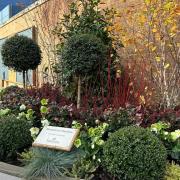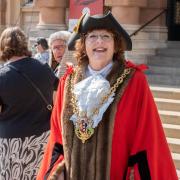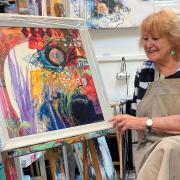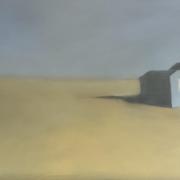Tessa Allingham watches a master craftsman at work

Come September, when Jim Parsons hangs up his fireman’s helmet after 30 full-time years in the service, you will be hard pressed to winkle him out of his workshop.
Then, you will more often than not find him at his workbench, directing his meticulous, perfectionist talent for woodworking into building chairs. He’ll probably be lightly coated in dust, as will the woodburner in the corner, the carefully-stored rows of drill-bits, saws, rasps and clamps, and the wooden ‘blanks’ hanging on the breeze-block walls of his converted garage. He’ll be stepping through the shavings that litter the floor, floating down from the bench with every pass of the heavy, double-handled compass plane.
He swings the plane in regular, almost hypnotic, arcs over a seat in the making. With several passes of the plane (it’s homemade, so exactly the right weight and balance for Jim, and performs – as good tools should – like an extension of his own body) a bottom-shaped dip emerges. Setting the big plane aside, he picks up ever smaller ones (a spokeshave, then a cabinet scraper, then fine sandpaper) to even out the wood till it’s ready to be oiled, the better to show off the stunning grain, or painted as is possibly more true to tradition.
This seat is for one of a set of elm-wood ball-back dining chairs, commissioned by a client of The Alde Valley Spring Festival. The 14 ball-backs – so-called because of their trademark spherical detail – are virtually finished, another 10 or so chairs stacked up at the end of his workshop. It’s a project that he’s fitted in around his day job, and that has taken an awfully long time to complete.

“Making chairs is an extremely involved, long process,” Jim says. “Every component is cut by hand to a template and every bit of wood has to be conditioned and prepared for the shrinkage and expansion that can happen in a centrally-heated house. And yes, I am a perfectionist! I do agonise over detail!” His ball-backs are, he explains, a more refined version of the modest Suffolk farmhouse chair, a “poor relation” to the sought-after Mendlesham chairs. The latter were typically made in Suffolk in the early-mid 19th century by members of the Day family, Sheraton-trained cabinetmakers in the Suffolk village of that name. Poor relation Jim’s chairs may be, but they are nonetheless beautiful, the natural grain of the wood highlighted with his careful oiling.
He talks as he works, clamping a spindle for the back of a capacious Windsor chair – he calls this the Wenhaston – into a rounding tool, again homemade. “It works like a giant pencil sharpener,” he explains, whipping the ‘sharpener’ round and round the clamped rod. It’s set to a precise circumference, cutting evenly and efficiently, ensuring that every one of the 10 spindles needed for the back of the chair, plus the three smaller ones on each arm, are identical. “It’s very physical work. I do this job for no more than an hour at a time, then I’ll finish the spindle with fine sandpaper.”
This Windsor carver will no doubt be on display at this year’s Alde Valley Spring Festival, along with examples of Jim’s own designs, including his Sandling chair, a contemporary, curvaceous, elegant chair that looks light as a feather but – made in ash as it is – is strong and functional. “I love making my own designs, particularly ones like this that don’t conform to any conventional rules of chair-making.” He likes organic shapes: a signature ‘bud’ on most of his chair-legs remembers the raw material, and the legs themselves are often branch-like rather than perfectly straight.
When he can, he uses Suffolk elm for seats, though supplies of wide-enough planks (they need to be at least 25” across) are scarce because of the ravages of Dutch elm disease. “The thing about elm is that, because of the close interlocking grain, it doesn’t split. It was also plentiful, used to grow like a weed and had a wide trunk, so it was an obvious choice.” In most of Jim’s pieces, the underframe, legs and back are made from steam-bent ash, often bought from a friend in Blythburgh who coppices woodland. “Ash is lovely to work with; it’s light, strong, finishes well, but that too is under threat from disease now.”
After leaving school, Jim learnt the art of repairing shotguns, quickly finding an affinity with the walnut wood stocks before embarking on a ‘proper’ career as a fireman. His creativity and love of wood was never far, however, and some 25 years ago he made his first reproduction Windsor chairs, initially copying the classic spoke-back chair faithfully. As his expertise developed, he started to stamp his own identity on pieces, and to work on unique designs. “It’s fantastic to have commissions like this ball-back set, and it’s exciting finally to see the end result, but I’ve never wanted to be held hostage to tradition. That would stifle my creativity!”
Jim and his chairs are at the Alde Valley Spring Festival at White House Farm, Great Glemham until May 22 www.aldevalleyspringfestival.co.uk as part of The Suffolk Chair Collection show.



























